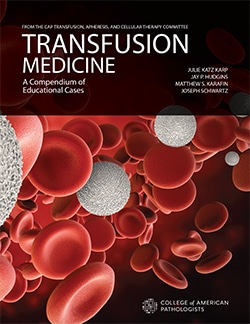April 2020—When Romney Humphries, PhD, D(ABMM), was section chief for clinical microbiology at UCLA Medical Center, it wasn’t unusual for her to take calls from worried clinicians who were concerned about patients who’d been transferred to the hospital for a higher level of care. The accompanying laboratory reports would indicate the presence of an isolate that was susceptible to a particular drug. But when Dr. Humphries’ lab did its own testing, the results were strikingly different: The isolate was drug resistant. When Dr. Humphries would call the first lab, the reason for the discrepancy became clear. “Sure enough, they were using old breakpoints,” says Dr. Humphries, who is now chief scientific officer, Accelerate Diagnostics, and professor of pathology, University of Arizona. Unlike Bordeaux, antimicrobial susceptibility test breakpoints do not age well. Over time, they might no longer be clinically useful, even as they continue to be used clinically. Dr. Humphries’ anecdote is, of course, just that—an anecdote.
Read More »April 2020
ER/PgR guideline hones approach to ER-low positives
April 2020—The CAP and the American Society of Clinical Oncology released two years ago a focused update of their clinical practice guideline for HER2 testing for breast cancer, following an update in 2013. Read more.
Read More »Moving beyond immunoassays for poisoned patients
April 2020—Bypassing immunoassays as the first step in toxicology testing can minimize clinician calls to the laboratory about negative toxicology reports for apparently overdosed patients and save diagnostic time. Read more.
Read More »Transfusion cases out of cabinet, into new book
April 2020—CAP Publications released this month a new book titled Transfusion Medicine: A Compendium of Educational Cases, from the CAP Transfusion, Apheresis, and Cellular Therapy Committee. In it are 20 cases, each with a history, discussion, and questions and answers. Read more.
Read More »Billing practices, problems — we ask the experts
April 2020—Billing and collecting for pathology and laboratory services is “tough and getting tougher.” That’s the view of consultant Al Sirmon of Pathology Practice Advisors, Pawleys Island, SC. “In what other industry,” he asks, “do you rely on a third party to decide how much and when you’re going to get paid for a service you provide to someone else?” On the bright side, he says: “We have better tools now.”
PD-L1 testing in triple-negative breast cancer: Post hoc IMpassion130 substudy evaluates PD-L1 IHC assay performance
April 2020—IMpassion130 was the first phase three trial to demonstrate a clinical benefit of cancer immunotherapy in patients with PD-L1-positive metastatic triple-negative breast cancer, and based on the data, atezolizumab plus nab-paclitaxel is approved for this indication. In the trial, the Ventana SP142 PD-L1 assay with a one percent or greater cutoff was used to evaluate PD-L1 expression in immune cells. But questions remained about how to best identify patients who could benefit from the drug combination, Hope S. Rugo, MD, professor of medicine and director of breast oncology and clinical trials education at the University of California San Francisco Comprehensive Cancer Center, said in a CAP TODAY webinar last November.
Read More »Student fellowship’s pluses seen in the field and out
April 2020—At Oregon Health and Science University, one of the oldest post-sophomore fellowship programs in pathology is recruiting steadily and channeling a quarter to a half of its student fellows into pathology residencies. Dating back to the 1920s, the OHSU Pathology Student Fellowship, as it is now known, starts recruiting at the end of the first year of medical school, says Nicole Andeen, MD, assistant professor of pathology and co-director of the program. “Medical students join after the preclinical curriculum or after a year in clinical rotations.” With former student fellows spreading the word, “recruitment happens naturally,” she says.
Read More »Q&A column
Q. For the population with diabetes, what can the clinical laboratory do to promote evidence-based testing and monitoring for chronic kidney disease? Read answer. Q. What are the proficiency testing enrollment requirements if an analyte is tested in multiple locations within the laboratory? Read answer. Q. With regard to specimens from oncology patients exhibiting hyperleukocytosis, the Beckman Coulter DxH 800 analyzer used by our laboratory autocorrects the RBCs, but the lab is still seeing errors on the indices (hemoglobin, MCV). What is the best way to correct for potential WBC interference on the RBC indices? Read answer.
Read More »Put It on the Board
Ortho Clinical Diagnostics in February made available its Vitros XT 3400 Chemistry System.
April 2020—Ortho Clinical Diagnostics in February made available its Vitros XT 3400 Chemistry System. The new system, like the Vitros XT 7600 Integrated System, simultaneously performs two tests frequently ordered together on one Vitros XT MicroSlide. Double assay processing offers a 25 percent faster turnaround time on a common panel of assays, Ortho said in its Feb. 26 statement, with an average processing time of 7.5 minutes. The XT MicroSlide allows for a sample volume of 2.7 μL.
From the President’s Desk: How the government influences your practice
April 2020—It is important for pathologists to understand just how much influence the federal government has on our practice of medicine. In last month’s column, I discussed ways in which the government dictates how and whether we are paid for our services. This month I’ll address the role of the federal government in determining where and how we practice. You probably already know that pathology labs are among the most highly regulated areas within health care, subject to regulations from multiple agencies.
Read More »Newsbytes
R programming language gains steam in pathology labs April 2020—Among laboratories focused on expanding data analytics, the statistical programming language R has a loyal user base that is steadily growing. “There is a crew of us that are really trying to show the utility of R for laboratories,” says Stephen Master, MD, PhD, chief of the Division of Laboratory Medicine and director of the Michael Palmieri Laboratory for Metabolic and Advanced Diagnostics at Children’s Hospital of Philadelphia.
Read More »Clinical Pathology Selected Abstracts
April 2020—An outbreak of pneumonia occurred in Wuhan, Hubei province, China, in December 2019. A novel coronavirus was identified as the causative agent and named SARS-CoV-2 by the World Health Organization (WHO). The disease, COVID-19, is considered a relative of severe acute respiratory syndrome (SARS) and Middle East respiratory syndrome (MERS). SARS-CoV-2–infected patients presented with a dry cough, dyspnea, fever, and bilateral lung infiltrates.
Read More »Anatomic Pathology Selected Abstracts
April 2020—Lymphocytic esophagitis is a well-known manifestation of Crohn disease among children but is not considered an immune-mediated mucositis in adults. The authors conducted a study for which they hypothesized that adult-onset lymphocyte-predominant esophagitis is also an immune-mediated inflammatory pattern, the nature of which has been masked by other conditions that feature esophageal lymphocytosis and occur in older adults. The intent of the study was to consolidate diagnostic criteria for lymphocyte-predominant esophagitis and determine its clinical significance.
Read More »Molecular Pathology Selected Abstracts
April 2020—Prior to the recent novel coronavirus outbreak, the vast majority of coronaviruses that were known to be pathogenic in humans caused mild symptoms, with the exception of two strains. These included SARS (severe acute respiratory syndrome coronavirus [SARS-CoV]) and MERS (Middle East respiratory syndrome coronavirus [MERS-CoV]). SARS was documented as having emerged in the Guangdong province in southern China in 2002 and having caused at least 774 reported fatalities worldwide, while MERS, which was first detected in Saudi Arabia in 2012, was responsible for at least 858 fatalities worldwide.
Read More »OncoLens offers free virtual tumor board platform
In response to the ongoing challenges for cancer care teams due to the COVID-19 pandemic, OncoLens is offering its OncoLens virtual tumor board software at no cost for 60 days after signing a business associate agreement, through May 15, 2020. The module enables cancer care teams to meet virtually, in real time, to discuss treatment options for their cancer patients on a secure, HIPAA-compliant platform.
Read More » CAP TODAY Pathology/Laboratory Medicine/Laboratory Management
CAP TODAY Pathology/Laboratory Medicine/Laboratory Management







